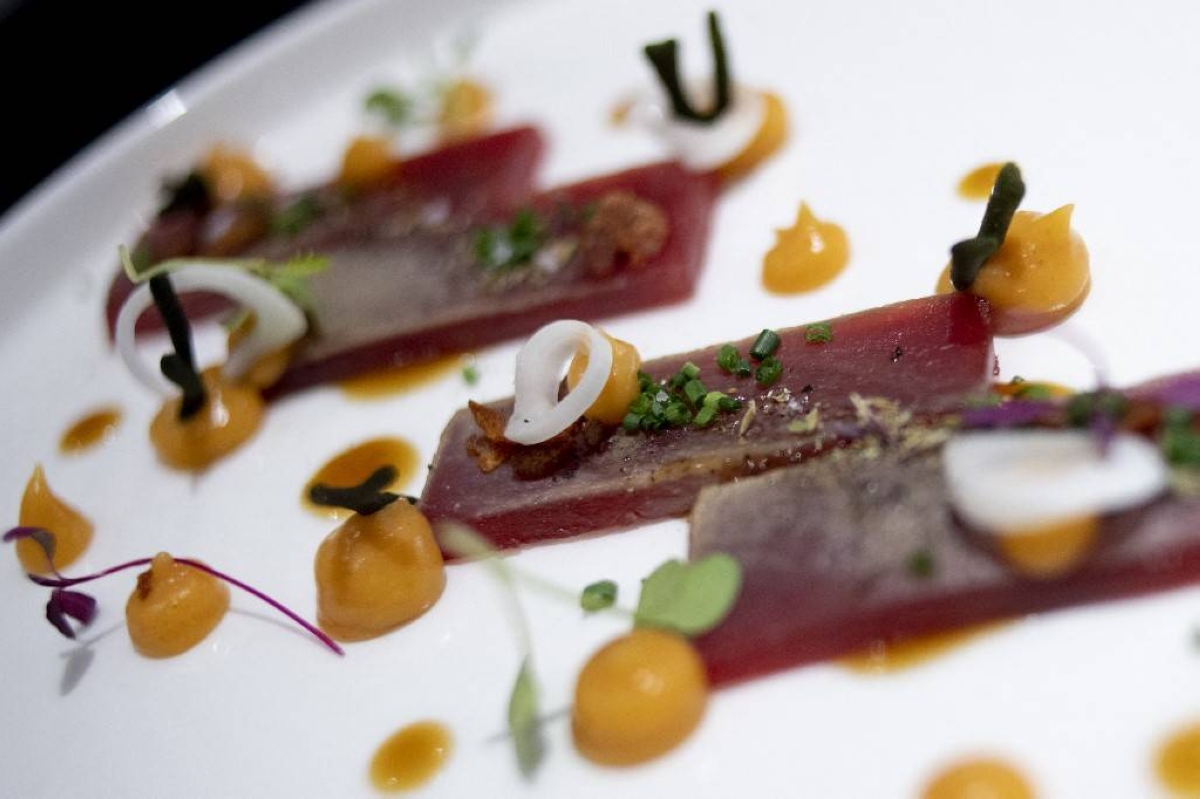ZAHARA DE LOS ATUNES, Spain: As the sun rises in the Gulf of Cadiz on Spain’s southern tip, a team of fishermen lifts the tip of a vast system of nets with bluefin tuna trapped inside.
“Hoist!” they cry before men in wetsuits jump into the water to deliver a final blow to the fish captured using this 3,000-year-old netting tradition.

Dubbed an “almadraba,” the system of nets is designed to catch large bluefin tuna during their annual migration from the Atlantic into the warmer Mediterranean to lay their eggs.
The nets form a series of chambers that trap only the biggest of the migrating tuna.
The tuna are “practically like bulls” and their blows are like “the kick from a horse,” said the captain of the fishing boat, 61-year-old Antonio Ponce.
Tuna have been caught in this stretch of water using this method since the Phoenicians ruled the Mediterranean from about 1,200 B.C.
Use of the technique in Spain almost disappeared in the 1970s due to a lack of profitability, but demand for quality tuna from Japan breathed new life into the sector.
Over 1,600 tons of bluefin tuna are caught annually off the coast of Spain’s southern province of Cadiz using the almadraba technique.
About 500 fishermen in Cadiz use the system, the Almadraba Producers’ and Fishermen’s Organization (OPP51) said.
Aside from Spain, the technique is only found in Italy, Morocco and Portugal.
‘Sustainable technique’
Because the nets only catch the biggest tuna, it is a “sustainable technique,” said Jose Luis Garcia Varas of the Spanish branch of the World Wildlife Fund (WWF).
In the early 2000s, the global popularity of sushi put bluefin tuna in danger but the establishment of regional fishing quotas allowed the species to recover.
Atlantic bluefin tuna was in 2021 moved from the category of “endangered” to that of “least concern” by the International Union for Conservation of Nature.
In Spain, the Japanese taught local fishermen to minimize the stress endured by the tuna to improve the taste of the meat.
Fishermen now use a sawn-off shotgun called a “lupara” to kill the tuna instantly.
While the structure of the nets “has remained more or less the same for many years,” what has changed is “the way of treating the fish to achieve quality, to take away their suffering,” said Ponce.
The Japanese also taught locals how to consume parts of the tuna that were previously thrown away — and got them to eat raw fish.
Bluefin tuna “has 25 parts, 25 textures, 25 tastes. They were not known before,” said Julio Vazquez, the 43-year-old head chef at the El Campero restaurant in the coast town of Barbate.
His menu includes 32 different dishes using bluefin tuna.
“When my mother or my grandmother cooked, there was not so much diversity,” he added.
‘Delicacy’
Vazquez recalled that the bestselling Spanish cookbook “1080 Recipes” by the late culinary author Simone Ortega had only one tuna recipe: for a gratin using tinned tuna.
While 80 percent of the tuna caught in Cadiz used to go to Japan, now 70 percent is sold in Spain and just 30 percent heads to Asia, said OPP51.
Thousands of people head to Cadiz — a region of whitewashed houses and sandy beaches — to eat bluefin tuna caught using the almadraba technique.
The tiny resort town of Zahara de los Atunes — named after the tuna — holds an annual festival dedicated to the fish. Last year, its bars and restaurants served 105,000 tapas during the four days of the event, according to the town hall.
“Here is all about freshness,” said Noah G. White, a 23-year-old chef visiting from Sweden, who asked for Vazquez’s autograph after eating at his restaurant.
“You can eat it raw and that is for me a delicacy in itself,” he added. — Agence France-Presse
*****
Credit belongs to : www.manilatimes.net
 Atin Ito First Filipino Community Newspaper in Ontario
Atin Ito First Filipino Community Newspaper in Ontario





